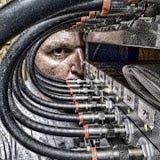How to Define an IP Range With Wireshark
In this video, Tony Fortunato demonstrates how to configure a Wireshark capture filter that allows you to filter by source and destination IP.
March 8, 2017

One of the keys to being an effective network troubleshooter when using a protocol analyzer is the ability to see patterns, which is where filters come into play. In this video, I review the two most common filters in Wireshark. Note that in Wireshark, display and capture filter syntax are completely different. A capture filter is configured prior to starting your capture and affects what packets are captured. A display filter is configured after you have captured your packets.
You may not know what to focus on when you capture packets, resulting in no capture filter. Even when you have a capture filter, it may be too generic. In either case, you will need to use a display filter to narrow the traffic down.
In this video, I respond to a question from one of my readers who wanted to create a Wireshark display filter for many IP addresses. One time-consuming approach would be to literally type out all the addresses you want to filter by. However, if the addresses are contiguous or in the same subnet, you might be able to get away with a Wireshark subnet filter.
The display filter syntax to filter out addresses between 192.168.1.1 – 192.168.1.255 would be ip.addr==192.168.1.0/24 and if you are comfortable with IP subnetting, you can alter the /24 to change the range.
About the Author(s)
How to Amplify DevOps with DevSecOps
May 22, 2024Generative AI: Use Cases and Risks in 2024
May 29, 2024Smart Service Management
June 4, 2024

